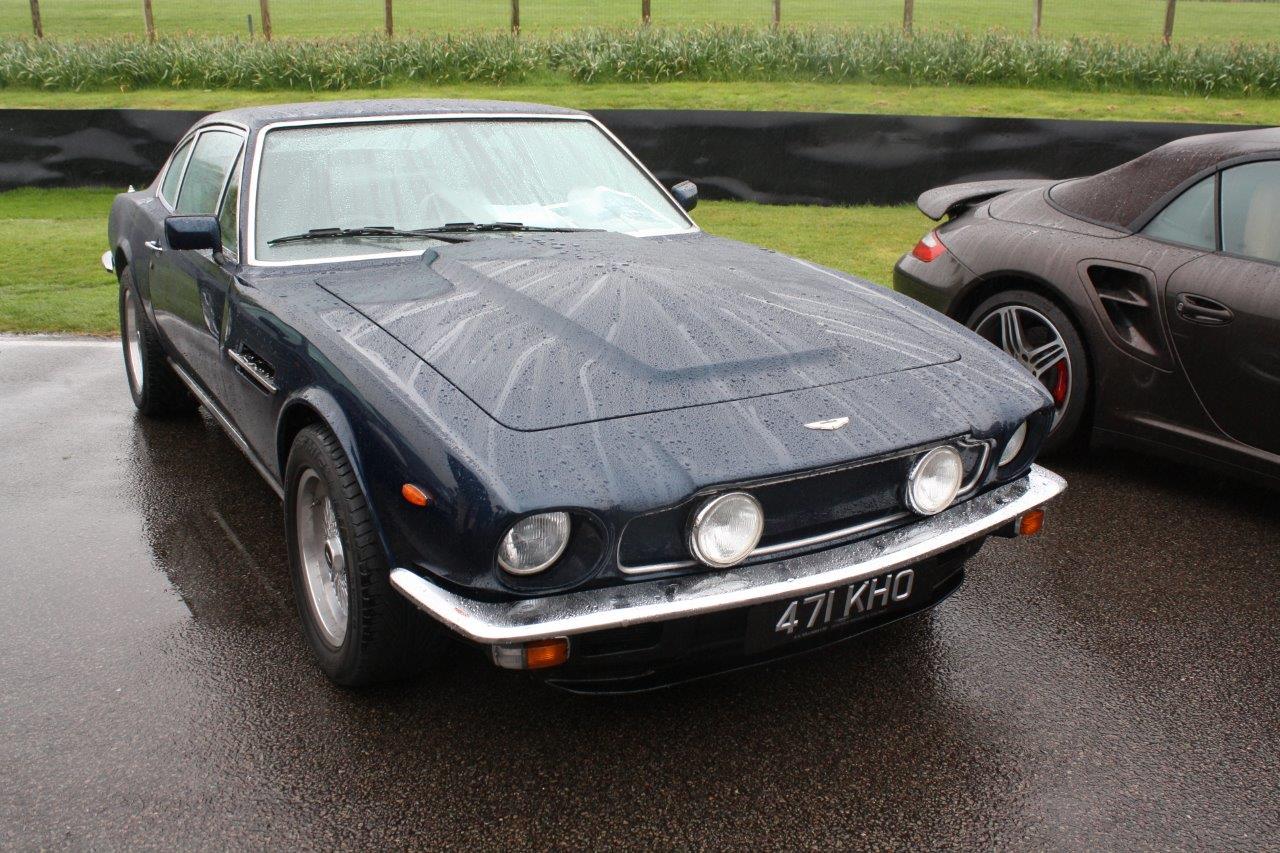-
Insurance
InsuranceAbout our productsLearn about insuringGet a quote Get current values, historical values, model history and more.
-
Valuation
ValuationHagerty valuation toolLook up a vehicle value Get current values, historical values, model history and more.
-
Events
EventsHagerty official eventsHagerty ClubhouseEvent calendar
-
Entertainment
EntertainmentMore to explore
- Portal login
1977 Aston Martin V8
Base Coupe 5.3 L
Vehicle values by condition
Fair
Condition 4
£42,900
#4 cars are daily drivers, with flaws visible to the naked eye. The chrome might have pitting or scratches, the windshield might be chipped.
Good
Condition 3
£57,700
#3 cars could possess some, but not all of the issues of a #4 car, but they will be balanced by other factors such as a fresh paint job or a new, correct interior.
Excellent
Condition 2
£70,600
#2 cars could win a local or regional show. They can be former #1 cars that have been driven or have aged. Seasoned observers will have to look closely for flaws.
Concours
Condition 1
£116,000
#1 vehicles are the best in the world. The visual image is of the best car, unmodified, in the right colours, driving onto the lawn at the finest concours.
Insurance premium for a
1977 Aston Martin V8 Base Coupe 5340
valued at £57,700
£359.29
/ year*
History of the 1972 - 1990 Aston Martin V8

1972 - 1990 Aston Martin V8
The Aston Martin V8 was a 2-door grand tourer manufactured between 1969 and 1989. Designed by William Towns, it featured an 8-cylinder engine driving the rear wheels.
The Aston Martin V8 was built in response to the company's customers' wishes for a V8 engined grand tourer. As a logical step to the previous straight-six powered DB6, the development was not in place to honour this. As a stop gap in 1967 the company released the DBS with straight-six Vantage power from the DB6. Two years later Tadek Marek's V8 materialised to be fitted to the new DBS V8. It remained in production for nearly 20 years to be replaced by the Virage in 1989.
From 1969 to 1972 Aston Martin built the DBS V8. Looking externally similar to the preceding 6-cylinder DBS, save the wire wheels and smaller front air dam, the V8 had a considerably higher purchase price. Other changes were larger front brake discs, air conditioning, and a more durable ZF gearbox. Utilising Bosch fuel injection, the DBS V8 could achieve 60mph in fewer than six seconds on the way to a top speed of nearly 160mph.
In early 1972, the DBS V8 name was changed to Aston Martin V8 and the 6-cylinder DBS was dropped leaving just the 6-cylinder Vantage as well as the V8 in production.
The V8 was now to be known as the AM V8 and also referred to as the Series 2 V8 to distinguish it from later cars. With David Brown's departure from the company, he had nonetheless overseen production of the Series 2 and ultimately just 288 were built.
In 1973 the decision was made to switch back to carburettors after attempts at getting the Bosch injection system to pass U.S. emissions tests had failed. As a result, a larger bonnet scoop was introduced to feed the quad twin choke Weber carburettors the car now sported.
By 1978 after various engine modifications to counteract the detrimental effect of emissions regulations on the car's performance, the series 4 'Oscar India' was introduced. Gone was the large bonnet scoop to be replaced by a sculpted bulge and wood trim was fitted to the interior with a nod to Aston Martin's DB2/4 many years previously. Power for the American market cars was now down to 245bhp and the effect was further exacerbated in the convertible Volante by the addition of heavy body reinforcing to assist structural rigidity.
Fuel injection was again introduced in 1986 using a Weber/Marelli system that no longer needed the space of the previous carburettors. As a result the bonnet bulge was eliminated. In all, 405 series 5 coupes and 216 convertible Volante's were built before production ended in 1989.
The Aston Martin DBS V8 received a warm welcome from the buying public when it rolled off the production line in 1969. Marek's superlative V8 engine giving the elegant coupe the power and scope for development it truly needed. Perhaps the only criticism levelled at the car was its sheer width, making country lane motoring a potential challenge. Today the V8 still enjoys keen attention from enthusiasts and the design has aged quite well. Spare parts backup is very good from a number of owners clubs and specialist remanufacturers making repair and restoration a viable exercise.
The Aston Martin V8 spanned a 20 year production run and was the mainstay of the company at that time. With original owner David Brown's departure, Aston Martin fell into a succession of ownership hands to be finally bought by Ford in 1989. Competitors to the V8 were numerous over this 20 year period, some more notable exceptions being the Jaguar XJ12 and XJS V12, the Lamborghini Espada, and the Ferrari 400.
Hagerty Newsletter
Get your weekly dose of car news from Hagerty UK in your inbox

ADVERTISEMENT